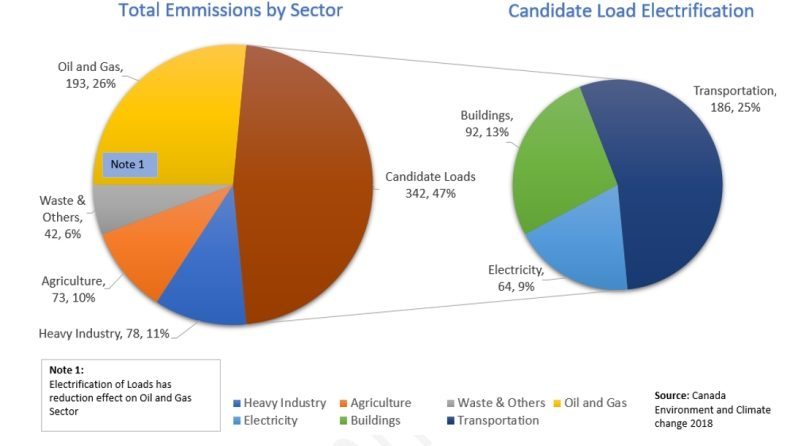
Benefits of Electrification: A Path To Our Climate Change Goals
3/4 of our emissions in Canada can directly be addressed by aggressively converting to other, more electricity-intensive technologies.
The debate that climate change is happening is pretty much over. We have all seen the fires, floods, hurricanes, locusts, and seasons shifting firsthand. So now what? As consumers, there are many individual things we can do to help address climate change.
What should our government, institutions and business do about it? Today I want to share what scientists are saying about electrification and why.
A study commissioned by the International Renewable Energy Agency (IRENA) concludes that “Renewable energy is the most effective and readily-available solution for reversing the trend of rising CO2 emissions. A combination of renewable energy with deeper electrification can achieve 75 percent of the (global) energy-related emissions reduction needed.” and the technology solutions are, for the most part, readily available. Sound crazy? Let’s take a closer look at the numbers in Canada.

The Canadian government’s data (shown above) highlights that almost 50% of our emissions can be attributed to buildings (mostly for heat and air-conditioning), transportation (cars, shipping air travel, public transit), and the generation of electricity. That’s right, almost 50%.
We can all think of ideas of how we can transition to new energy uses. For instance, electric vehicles, better public transit, non-emitting building heating systems, more renewable generation like solar and wind. The question is, why is it not happening faster?
Leaders like Elon Musk have taken up the charge to think outside the box and just do things. Now, most of the major car manufacturers are following Tesla’s lead. So, what’s next?
- Unbelievable advancements in battery technologies making battery life and capacity increase while reducing their size and weight?
- Electric planes, trains and boats?
- Solar and wind technology that can be cheaper than traditional generation assets?
- Small nuclear reactors?
- Marine tidal power?
- Advanced grids to enable flexible renewables?
The list goes on!
Let’s be frank people. As we transition to cleaner energy systems, some people and organizations are bound to be hurt by the switch. There are workforce, business, tax, and other implications that are not yet clear. In True North style, we should not leave anyone behind, therefore we must figure this out as we proceed.
To close, all the sectors shown are working at reducing their emissions using electricity and other means, and all projects are valid. The question is, how can we address the roadblocks and increase the pace?
It truly is a multifaceted challenge:
- Where should we invest our money?
- Does our utility, provincial and municipal planning take all of this into consideration?
- Who should pay?
- Is the legacy grid infrastructure big enough and smart enough to handle these changes?
- How do grid operators ensure reliability?
- What has to happen to building infrastructure so that we can convert more heating and air conditioning systems?
- Are our regulations, incentives and policies enough?
- Do we have the right codes and regulations?
Clearly, there is a lot to consider, but none of these unanswered questions should change our resolve. At a minimum, doing whatever we can to improve our Co2 footprint including increasing the electrification of our generation, uses, and the associated grid upgrades will get us closer. Let’s find ways to collaborate on this important topic.
If you would like to continue to be part of this dialogue, become a member of SGIN to foster Canada’s transition to a Clean Energy Future.
